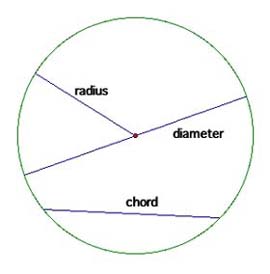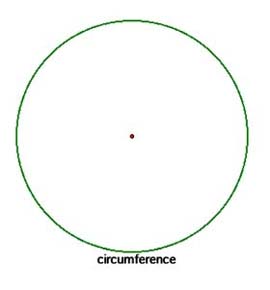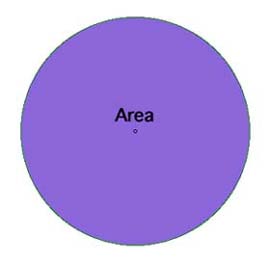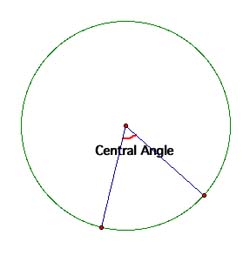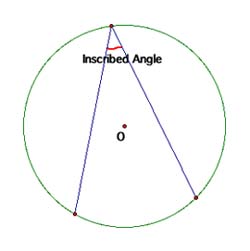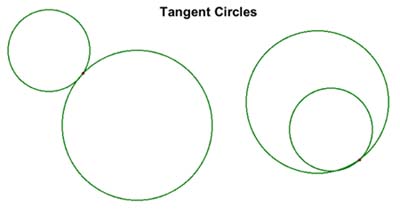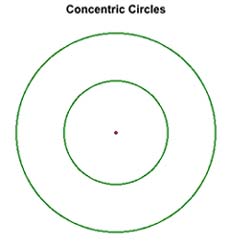Day 1: Definitions
Objective: Have students understand the
common definitions associated with circles such as radius, chord, and
tangent, as well as the definition of a circle itself
Lesson:
Key Definitions:
|
- Circle: the set of all points in a
plane equidistant from a given point called the center of the circle
- The interior of a circle is all the points
inside that circle
- The exterior of a circle consists of all
points outside the circle
|
|
|
- Radius: the distance, r, from any point on
the circle to the center of the circle
- Two circles with the same radius are called congruent circles
- Diameter: the longest distance
across the circle, the length, d, of the segment passing through the
center of the circle with both endpoints on the circle, d = 2r
- Chord: a segment having both endpoints on the
circle
|
|
| - Circumference: the
distance around the circle, the perimeter, 2*pi*r
= pi*d |
|
| - Area: the interior of
the circle, pi*r2 |
|
| - Central Angle: an angle with
endpoints on the circle and vertex at the center of the circle |
|
| - Inscribed Angle: an angle
with endpoints on the circle and vertex on the circle |
|
|
- Tangent: a line perpendicular to the radius
which intersects
only one point on the circle
- The point of tangency is the point where
the tangent line intersects the circle
- Secant: a line passing intersecting two
points on the
circle
|
 |
|
- Two circles that intersect at one point are called tangent
circles
- Two circles with the same center are called concentric
circles
|
|
Begin the class by having the students discuss their ideas about
circles. Have
the students define a circle and its radius and diameter as well as
area and
circumference.
Then
begin
going
over
the remaining key definitions with the students, having them discuss
what they
believe the definitions of chord, secant, and tangent to be. Finally,
with the
assistance of the students, write formal definitions for circle,
radius, diameter,
chord, circumference, area, tangent, and secant and then label these
concepts
on a diagram.
Activity: Have
the students discover the value of pi. Have a large selection of
circular objects such as jars or cans or lids of different sizes so
that each group can have at least four different objects. Form groups
of approximately four students, give each group a tray containing a
ruler, string, and at least four circular objects. In their groups, the
students will use the string and the ruler to find the measure of the
circumference of the object and the diameter of the object. Then the
students will find the ratio of the circumference to the diameter, and
this should give the approximately the value of pi. Click here for a sample activity worksheet.
Conclusion: Discuss
the activity with the class, having them conjecture as to why this
activity produces the value of pi.
<>
Next: Day 2
Back to Homepage
Developed by
Katherine Huffman
